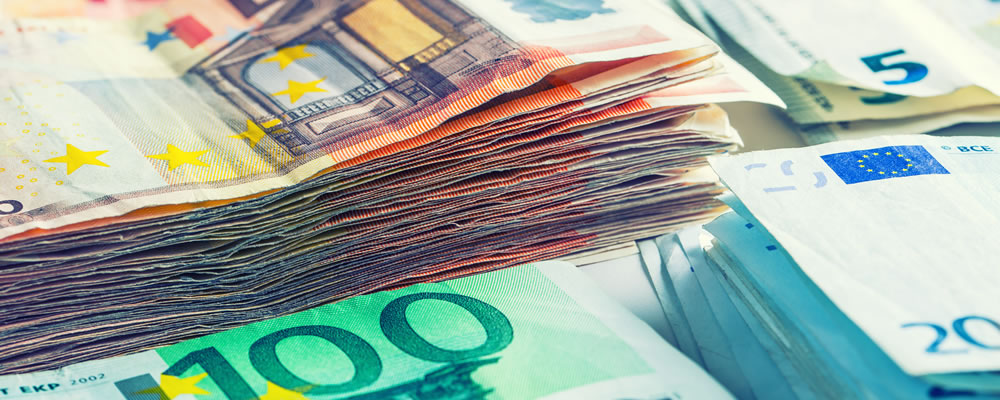Markets were discouraged by the news that the UK government intends to invoke Article 50 before the end of March 2017, prompting the Euro to Pound exchange rate to trend sharply higher.
- Investor worries mounted over outlook of Greek economy – Fresh anti-austerity protests weighed on Euro demand
- EUR GBP exchange rate soared following Theresa May’s Brexit comments – Prospect of hard Brexit severely dented Pound confidence
- US Dollar boosted by robust manufacturing sector – Stronger-than-expected data encouraged higher odds of 2016 Fed rate hike
- EUR USD exchange rate volatility forecast on US employment data – ‘Greenback’ could strengthen further on tightening labour market
With investors once again betting on the chances of the Federal Reserve raising interest rates imminently the Euro to US Dollar exchange rate has remained under pressure.
Resurgent Greek Worries Hampered Euro Exchange Rate Strength
It has been a somewhat mixed start to the week for the Euro (EUR), in part thanks to continued worries over the outlook of the Greek economy. The latest Greek Manufacturing PMI slumped back into contraction territory at 49.2 and fresh protests over austerity measures overshadowed the draft budget. Rising tensions do not seem to bode well for Greece’s ability to meet its bailout conditions, particularly with domestic ecostats offering little cause for confidence. This limited the appeal of the single currency, reigniting investor concerns over the robustness of the Eurozone.
Confidence in the Euro could weaken further on Tuesday morning if the Eurozone Producer Price Index figures for August prove disappointing. Forecasts point to a dip from 0.1% to -0.1% on the month, something which would suggest that inflationary pressure within the currency union remains limited. Any signs of a return to price deflation would encourage investors to sell out of the common currency, denting EUR exchange rates. However, an upside surprise here could offer support to the Euro if steady price pressures point towards a more limited likelihood of the European Central Bank (ECB) returning to monetary loosening.
EUR GBP Exchange Rate Hits Three-Year High on Brexit Anxiety
Demand for the Pound (GBP) slumped sharply on Monday in response to comments from Prime Minister Theresa May. Markets were spooked once again as May confirmed that the government was looking to trigger Article 50 and formal exit proceedings from the EU by March 2017. This saw the Euro to Pound (ERU GBP) exchange rate jump to a fresh three-year high of 0.8748, with investors also concerned by the increasing prospect of a so-called ‘hard’ Brexit which could see the UK lose its access to the single market.
Hopes were not high for September’s UK Construction PMI, despite an unexpectedly strong performance from the corresponding Manufacturing PMI. The domestic construction sector has remained in a state of contraction since June, with Brexit-based anxiety having weighed particularly heavily on the industry. As a result expectations were for continued weakness in the measure, which was predicted to clock in at 49. Although the measure did ultimately surprise to the upside with a reading of 52.3, this was not enough to improve the mood towards Sterling on Tuesday morning.
US Dollar (USD) Volatility Forecast on Non-Farm Payrolls Report
Despite uncertainty over the outcome of the upcoming US presidential election the US Dollar (USD) found fresh support at the start of the week. Markets were encouraged by a better-than-expected ISM Manufacturing Index, which strengthened from 49.4 to 51.5 in September. This suggested that the world’s largest economy was in a stronger state than previously thought, helping to push the Euro to US Dollar (EUR USD) exchange rate lower. Naturally this positive data prompted fresh speculation over the odds of the Federal Reserve raising interest rates imminently, with the prospect of a 2016 rate hike still very much alive.
The appeal of the ‘Greenback’ could soften in anticipation of Friday’s Non-Farm Payrolls report, though, as employment data remains the key factor in the timing of any Fed action. As analysts at Deutsche Bank note:
‘Friday’s employment report is clearly the highlight of the week, because it has the potential to change both investors’ and monetary policymakers’ assessment of the economic outlook.’
Should the domestic labour market show further signs of tightening then the EUR USD exchange rate is expected to weaken further, with higher odds of December policy action likely to be priced into the US Dollar. On the other hand, any shortfall could see the ‘Greenback’ come under renewed pressure, given the more dovish leanings of some members of the Federal Open Market Committee (FOMC).
Current EUR, GBP, USD Exchange Rates
At the time of writing, the Euro to Pound (EUR GBP) exchange rate was trending higher around 0.8748, with the Euro to US Dollar (EUR USD) pairing slumped in the region of 1.1178.



